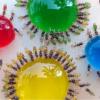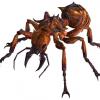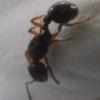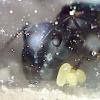Hi everyone,
This is a summary of all the natural pigments you can use to dye your ant nests. Indeed, formicarium without colors tend to be a bit...bland.
I hope this will be useful !
1) Walnut stain
It's a brown/black liquid made from the skin around the walnutshell. Careful it's really stainy !
How to obtain it :
1 / Cut the shells into thin strips
2 / reduce over low heat during 1 hour in 1 / 2L of water
3 / whizz up the preparation (optional)
4 / reduce again to 1/3 of the volume on low heat (careful not to burn it)
5 / Strain the juice with the dishcloth and wring the slats with it (to remove as much juice)
6 / Serve chilled white wine ( oh, that's another recipe  ...)
...)
Note : You can use this technique with other natural products such as berries..etc.
2) Yellow ochre
This is a color of the resulting ochre spray, a wide spread clay. We can have colors ranging from bright yellow to pale orange.
How to obtain it :
1) crush the stone into a fine powder (hammer + cloth ...) and mix it with a little water.
3) Rust
It gives a nice red, blood like color  .
.
How to obtain it :
you just have to crush some old rusty iron and reduce it to powder using a file. Then you just have to add a little water !
4) Red brick
Nice red color. Positive point : it's easier to find than clay or rust
How to obtain it :
Use the same technique as for the clay except you do it with a brick. 
5) charcoal/ashes
Easy to find : you don't even have to go out to find some (you can get some in your fire place...)
How to obtain it :
Depending on the state of calcination, it can go from black to white ! You just have to add a little water and apply the mixture on the nest.
6) Black sepia
Sepia is squid ink, which is pure black, but deviates from black to blue when diluted.
How to obtain it :
What is practical is that you just have to go to the corner fishmonger to have some ! And you can directly apply it on your formicarium.
7) Rainbow
The simplest non-toxic colorant you can get: food colouring!
How to obtain it :
Available in any supermarkets,you just have to dilute it ! You can get blue, green, purple, yellow .....
That's all I've got. If you have any more ideas or tips, tell me, I will add it on the list. ![]()
- Formiculture.com
- Forums
- Gallery
- Members
- Member Map
- Chat






















